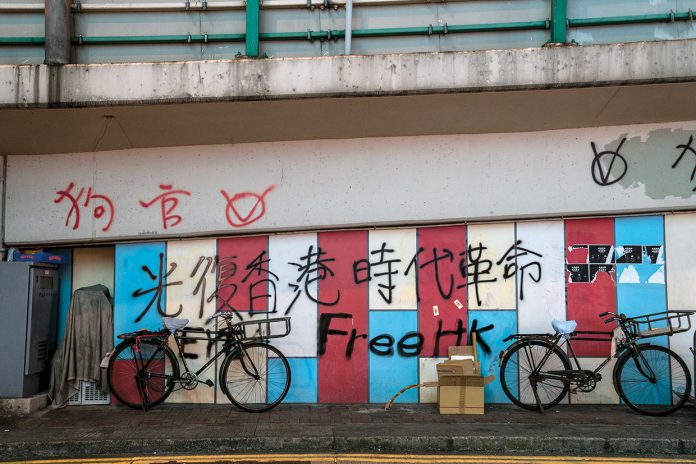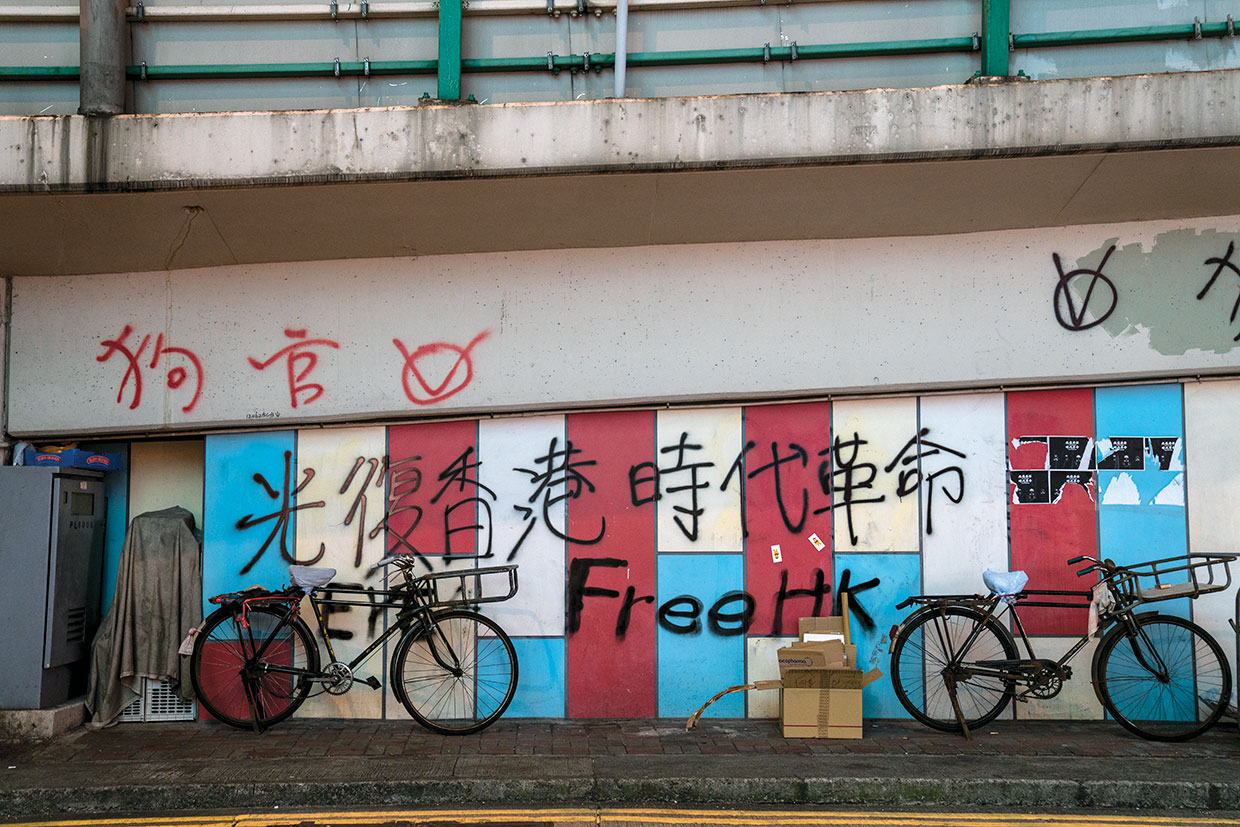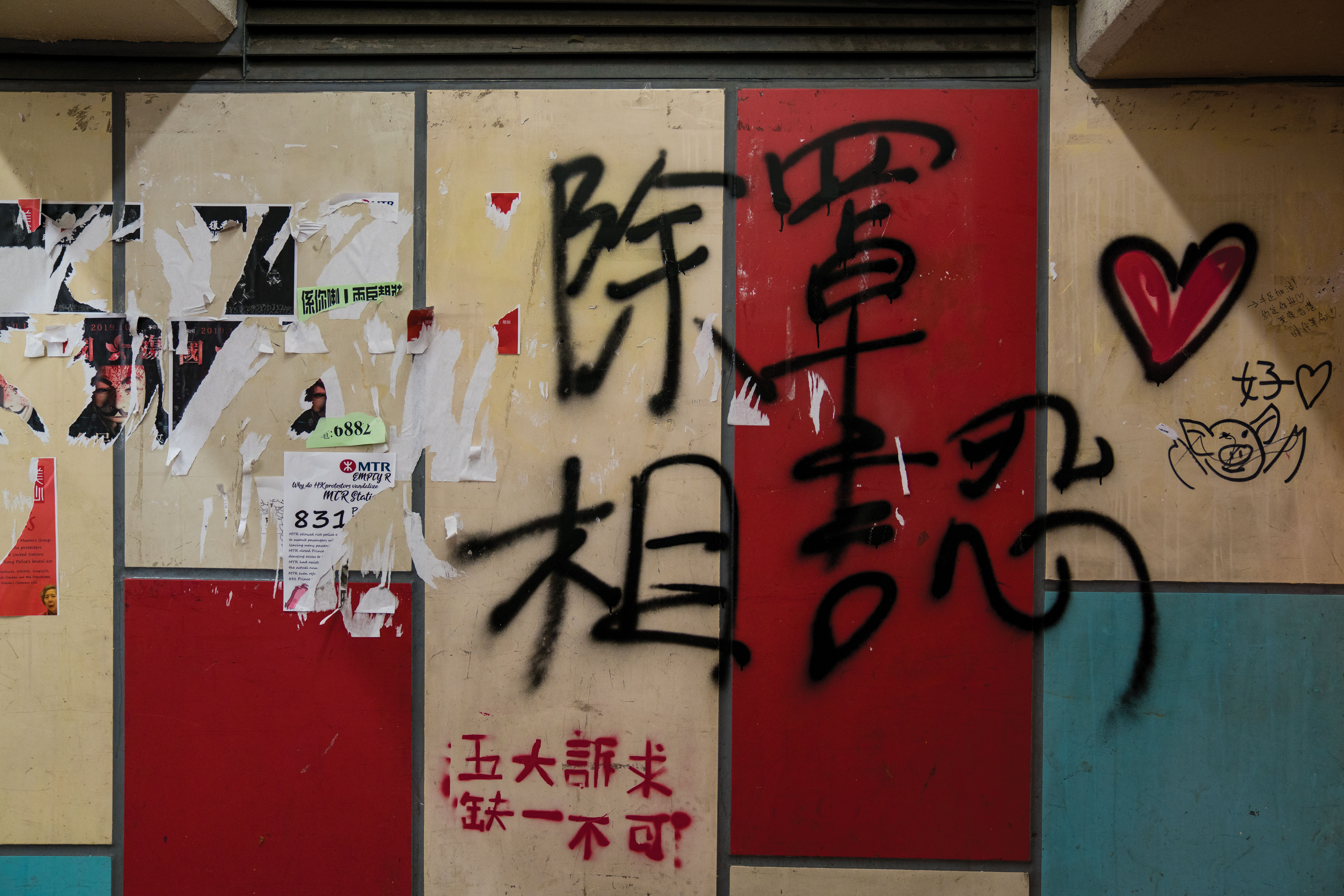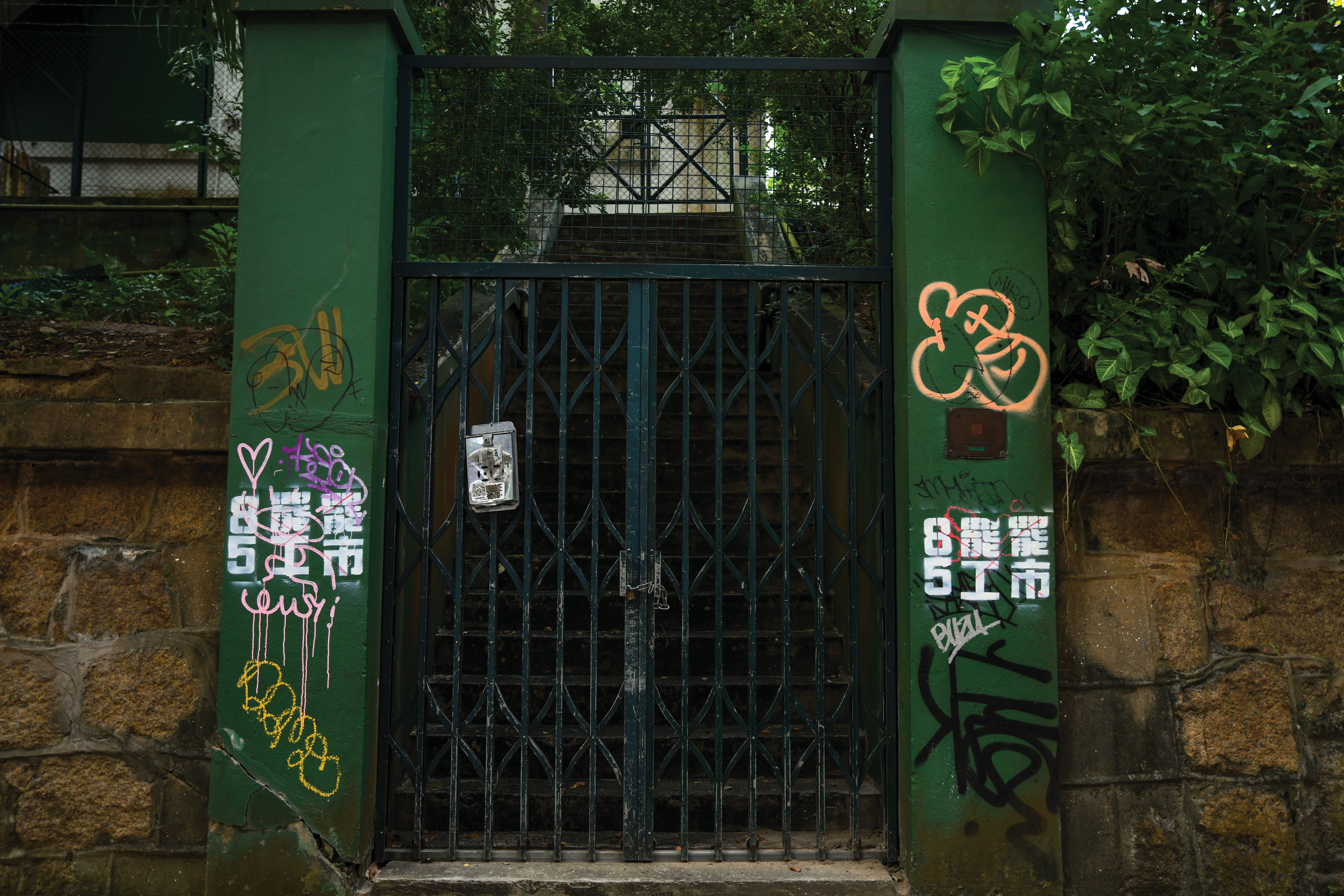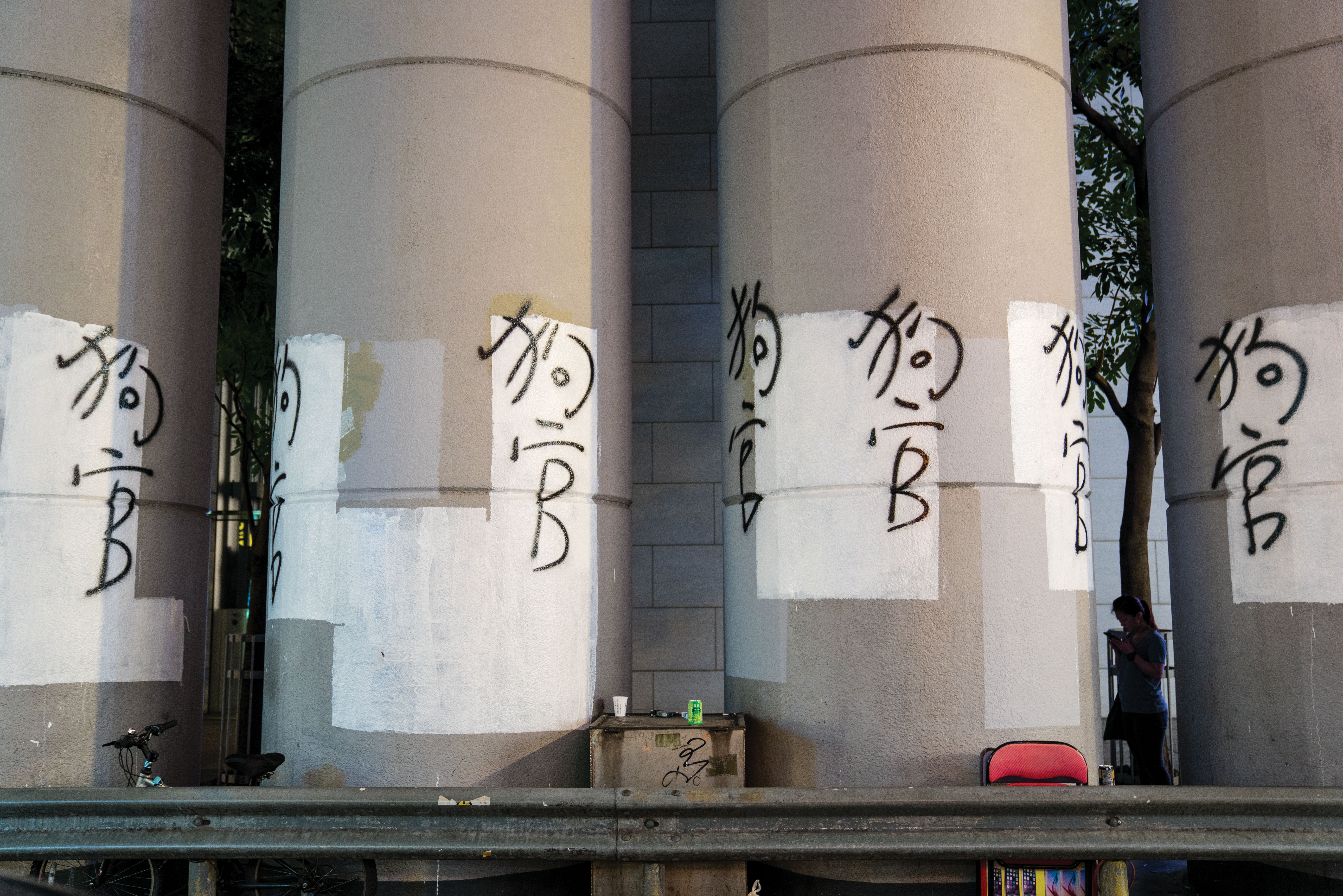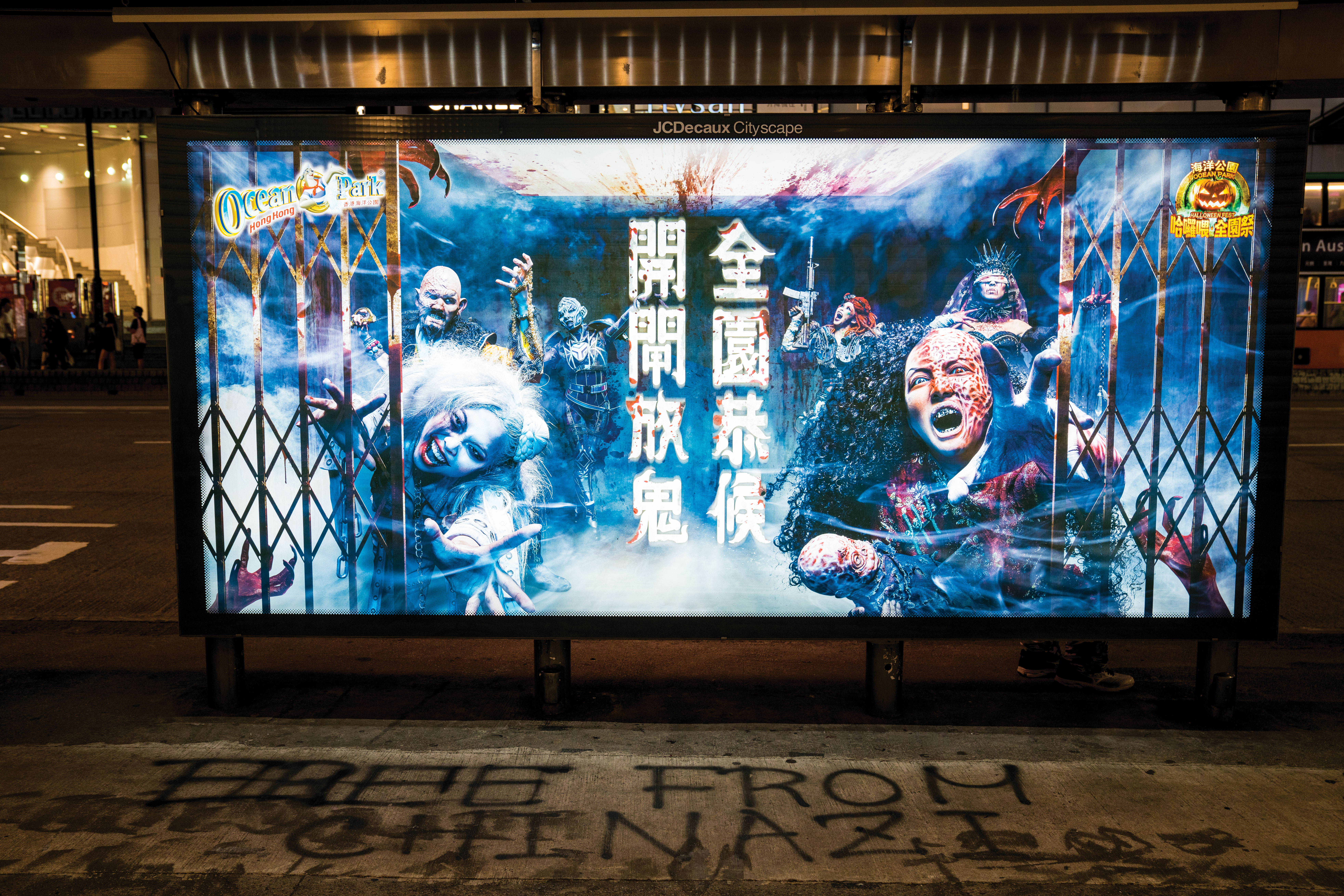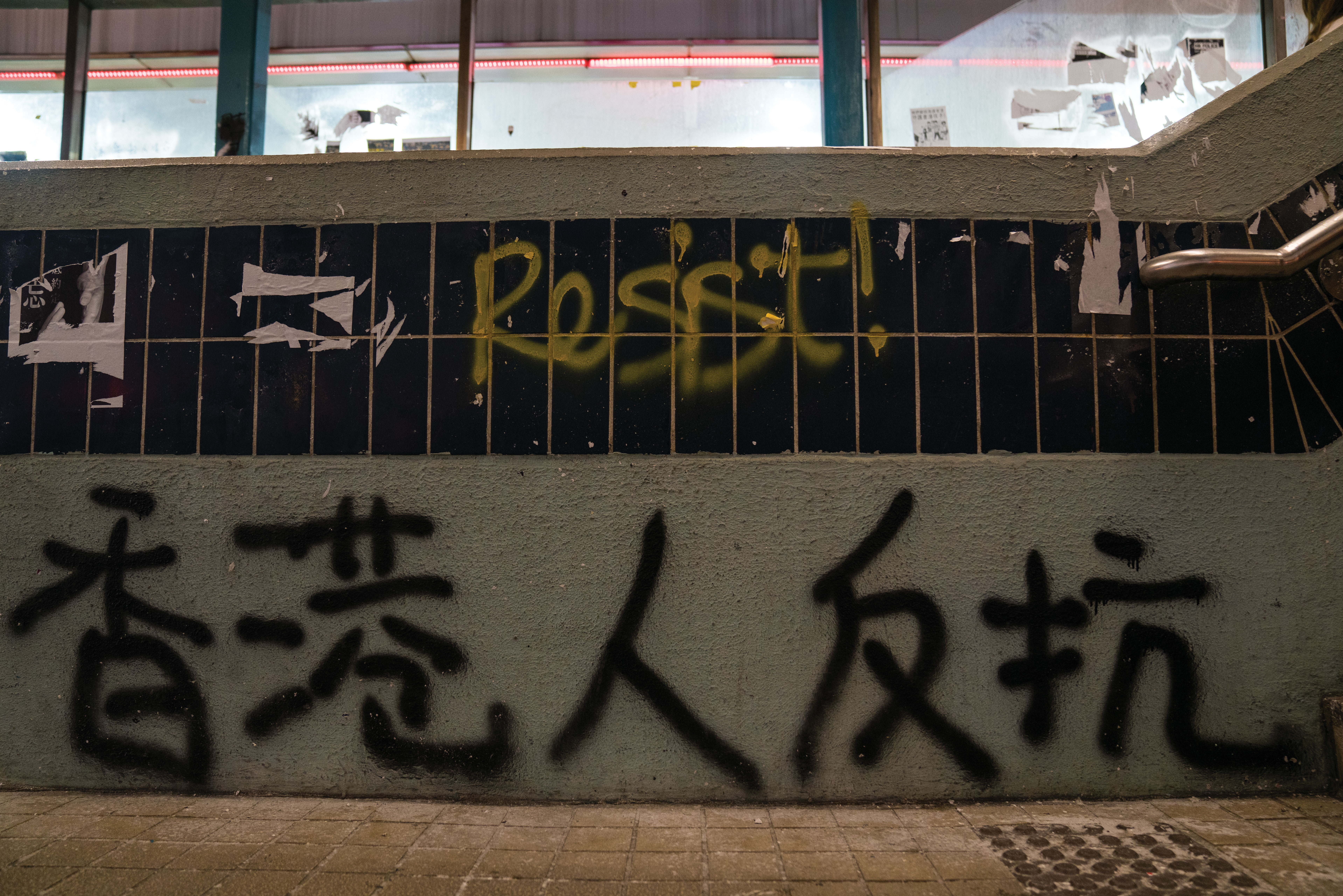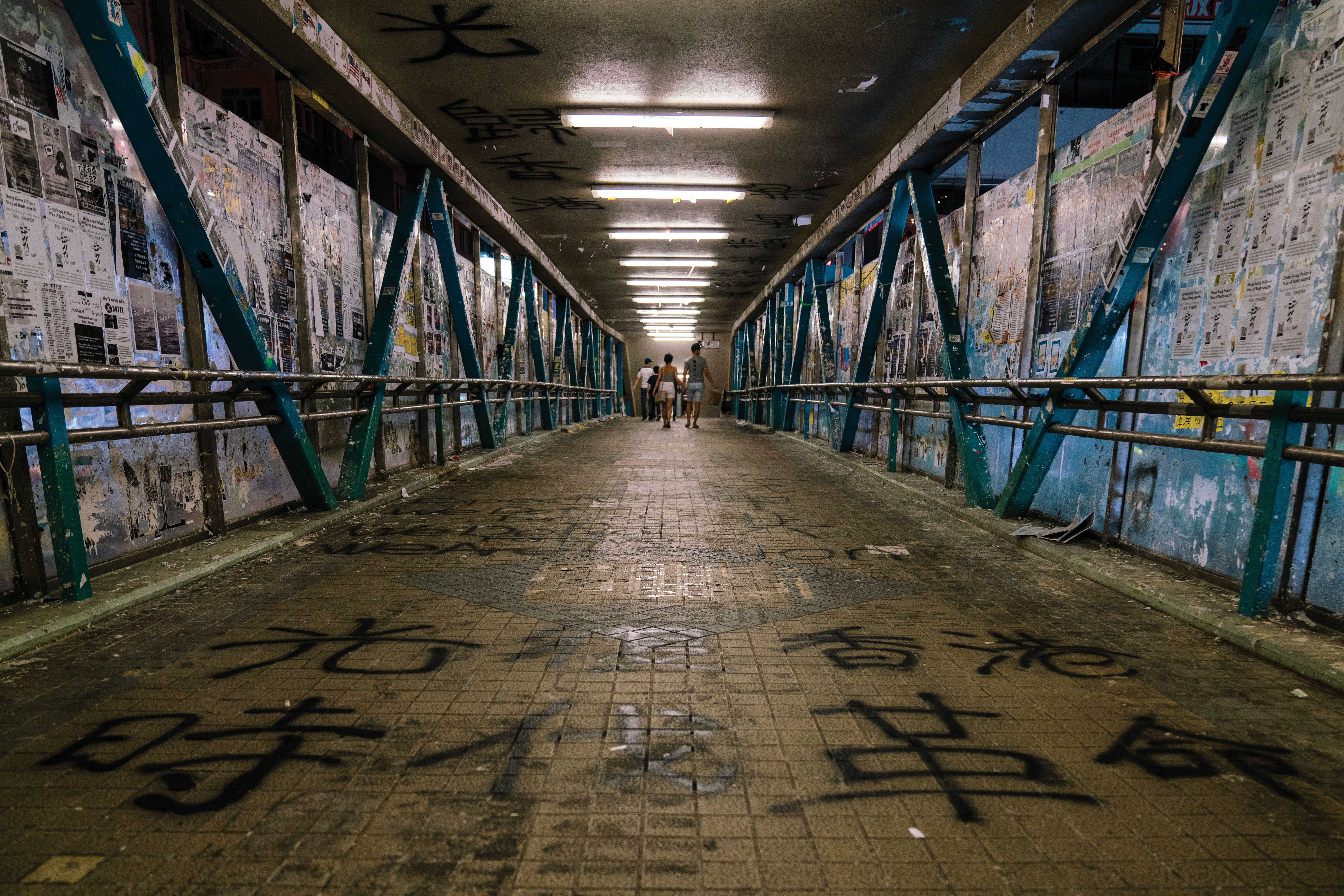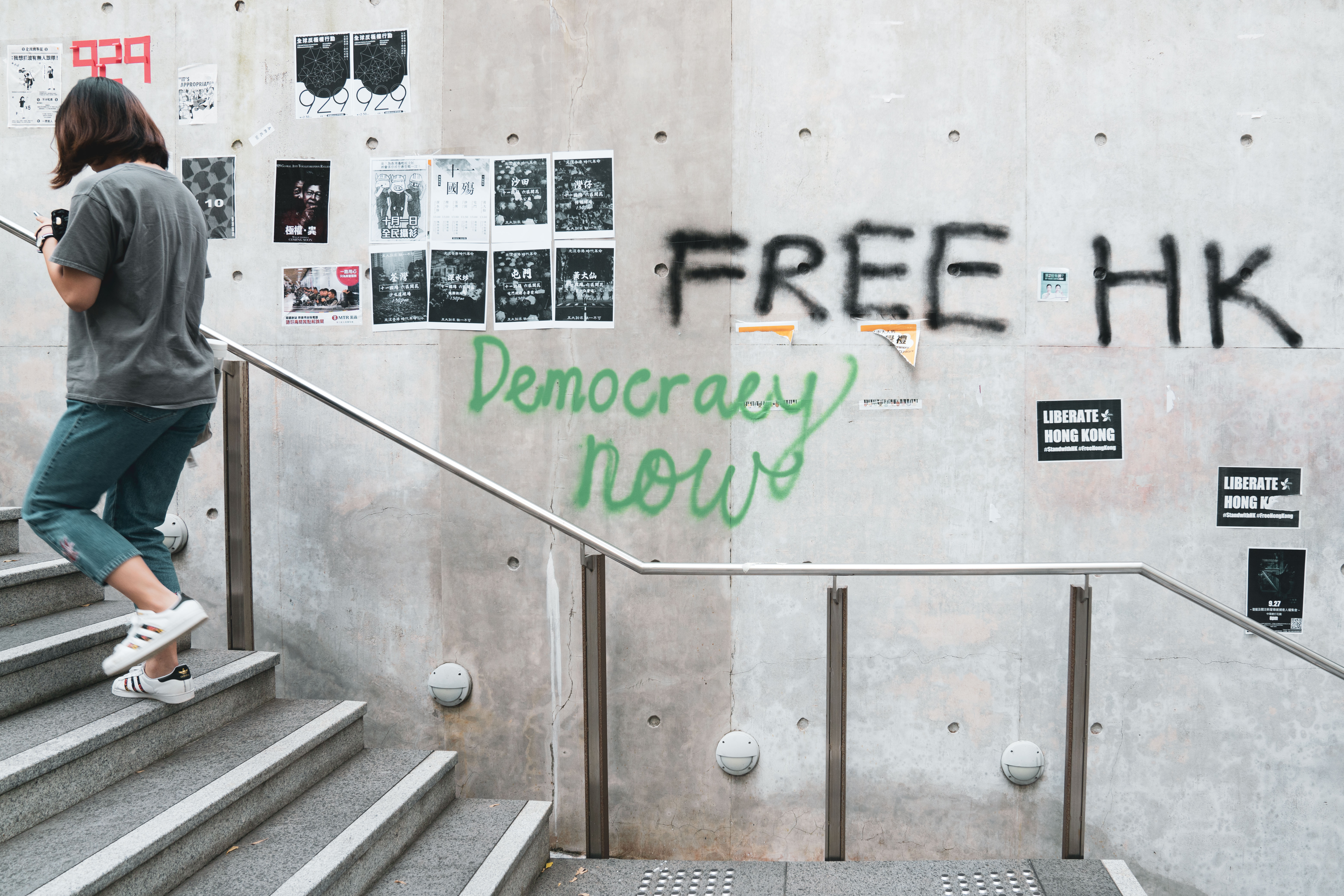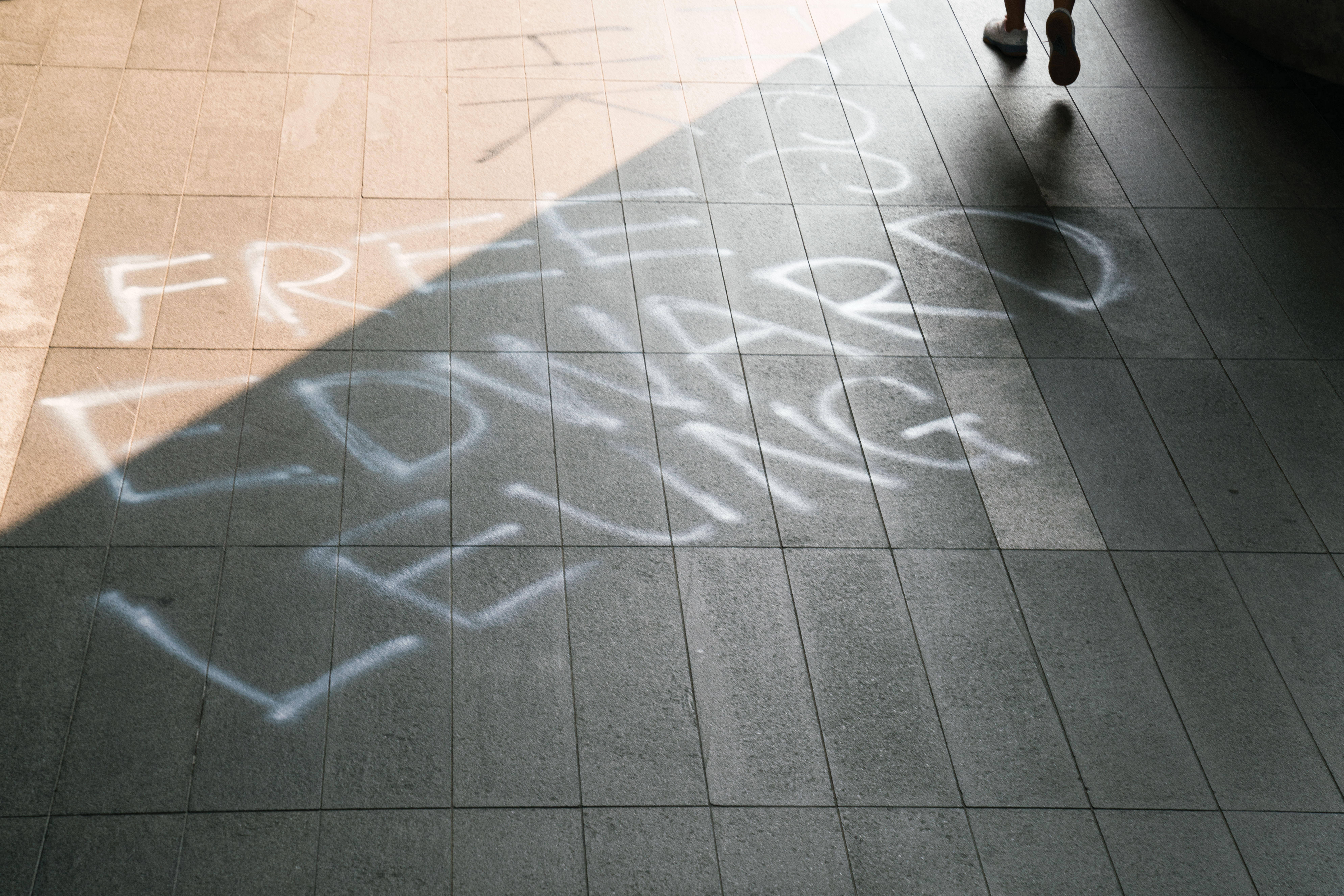Street art in Hong Kong has limited room for development.
By Emilie Lui
Political posters, graffiti and stickers have scrawled across the city amid on-going anti-government protests. People have been creating street art with political messages to express their discontent towards the government.

Midnight Glue is a team that creates political art, mainly stickers, big and small, not only to catch people’s attention but also to encourage others to do the same. “It is a less risk-bearing activity we can do for the community compared to going to the frontlines,” a Midnight Glue member, who refuses to reveal his identity, says.
Midnight Glue’s iconic artworks are mega-size stickers which portray police’s excessive use of force. A Midnight Glue member says, “We believe the large-scale image can help people to face reality. They can stop reading news and taking part in discussions of the movement, but they cannot turn a blind eye to the images on the walls.” Apart from stickers, they also use stencils and leave messages on streets, urging people to join the social movement and also reminding people of the five demands:

- Complete withdrawal of the extradition bill
- An independent inquiry into alleged police brutality
- Retraction of the classification of protesters as “rioters”
- Amnesty for arrested protesters
- Implementation of dual universal suffrage
While people in western countries have been using art as a tool to express their views for many years, a local graffiti artist Pantone C thinks it is quite difficult for Hong Kong to develop a culture like foreign countries. He thinks that graffiti and street art can only be a scratch since the artworks are usually quickly removed. However, Pantone C supports what the people are doing. “This is a rebellious action, yet I don’t think there is any problem with it. It’s just like people using different ways to protest and express their discontent towards the government. Street art and stencilling are more contagious than simply writing down slogans on the walls,” Pantone C says. “It is easy to write words using colour spray, but it is difficult to write it artistically. So, one of the reasons why I set up the workshop is to teach others basic skills of making graffiti.”

Art can be a tool for people to express their views or deliver messages. However, street artist Smilemaker doubts whether such art can still exist. “Hong Kong has been enjoying a high degree of freedom of speech, but I am not sure whether it still has that. Or maybe it doesn’t anymore,” he says. “Freedom of speech in Hong Kong is no longer like before, so probably there may be some limitations when it comes to the themes of artwork.”
Pantone C also thinks that the room for street art development is limited because of the culture in Hong Kong. Street artist Smilemaker agrees and explains, “I think the pace in Hong Kong is too quick for people to appreciate street art, especially in this generation when most of us are glued to our smartphones when we are walking down the street. So, it’s pretty unlikely that people will stop by and look at street art.”
However, the government, in fact, acknowledges that introducing street art into the community can encourage people to be more engaged in their neighbourhood. The Energizing Kowloon East Office (EKEO) of the Development Bureau has launched several projects to develop street art in Hong Kong. The Back Alley Project @ Kowloon East was one of the projects that helps energise the pedestrian area in Kwun Tong. A spokesperson of EKEO says pedestrian flows in the revitalized back alleys have increased by more than 10% to around 20% from 2016 to 2019. This shows that street art is actually bringing a change to society.
Edited by Lily Yu





































